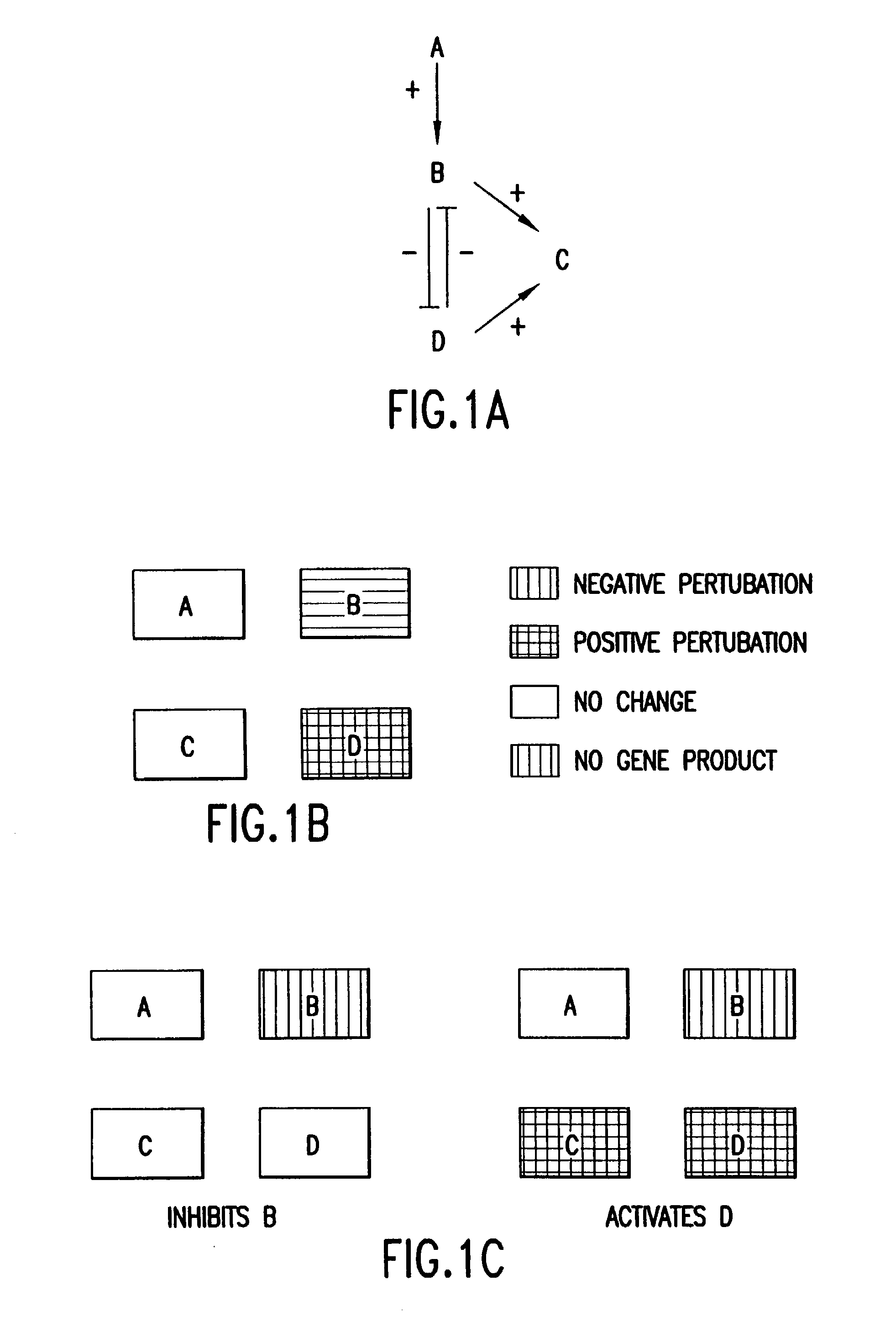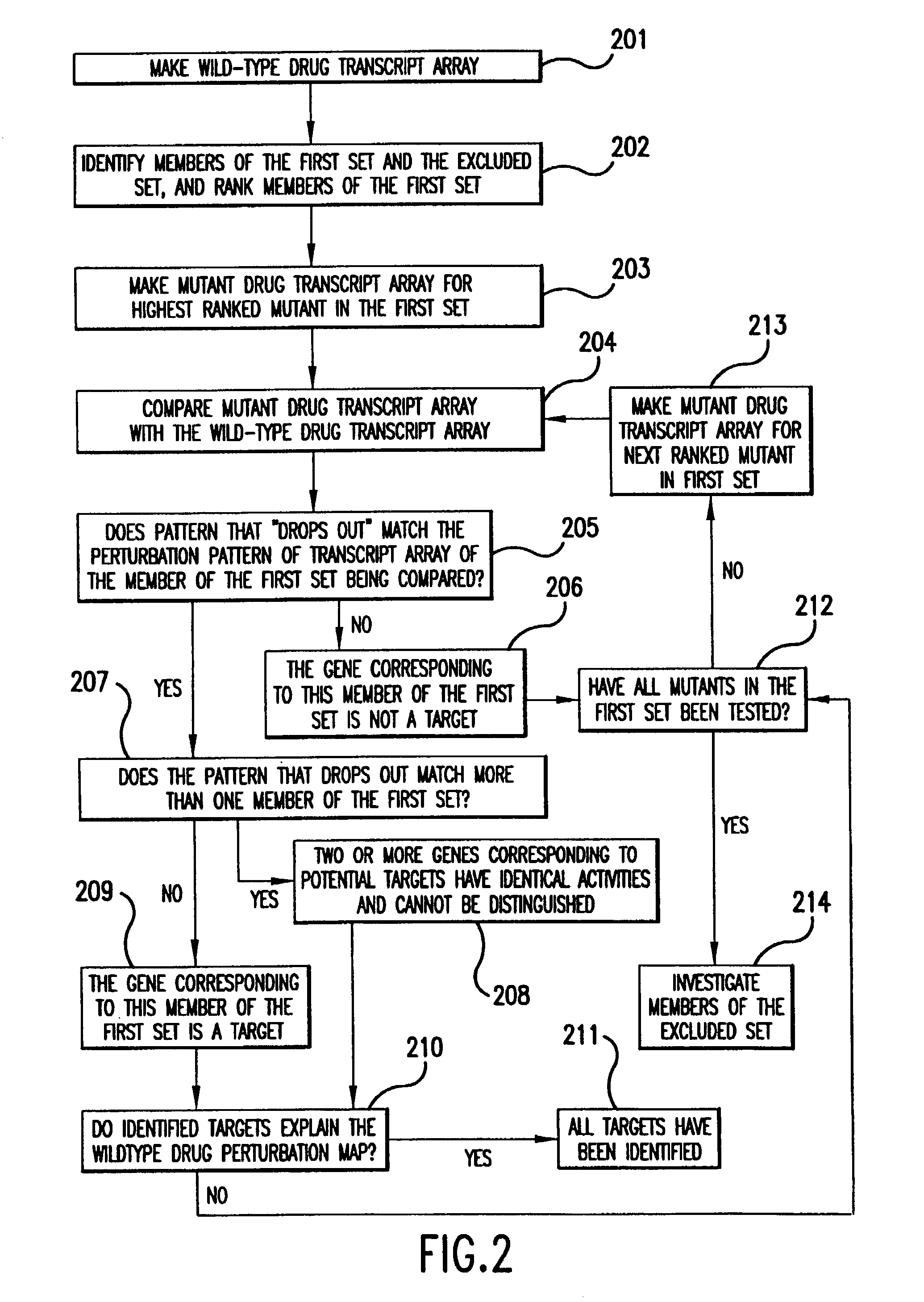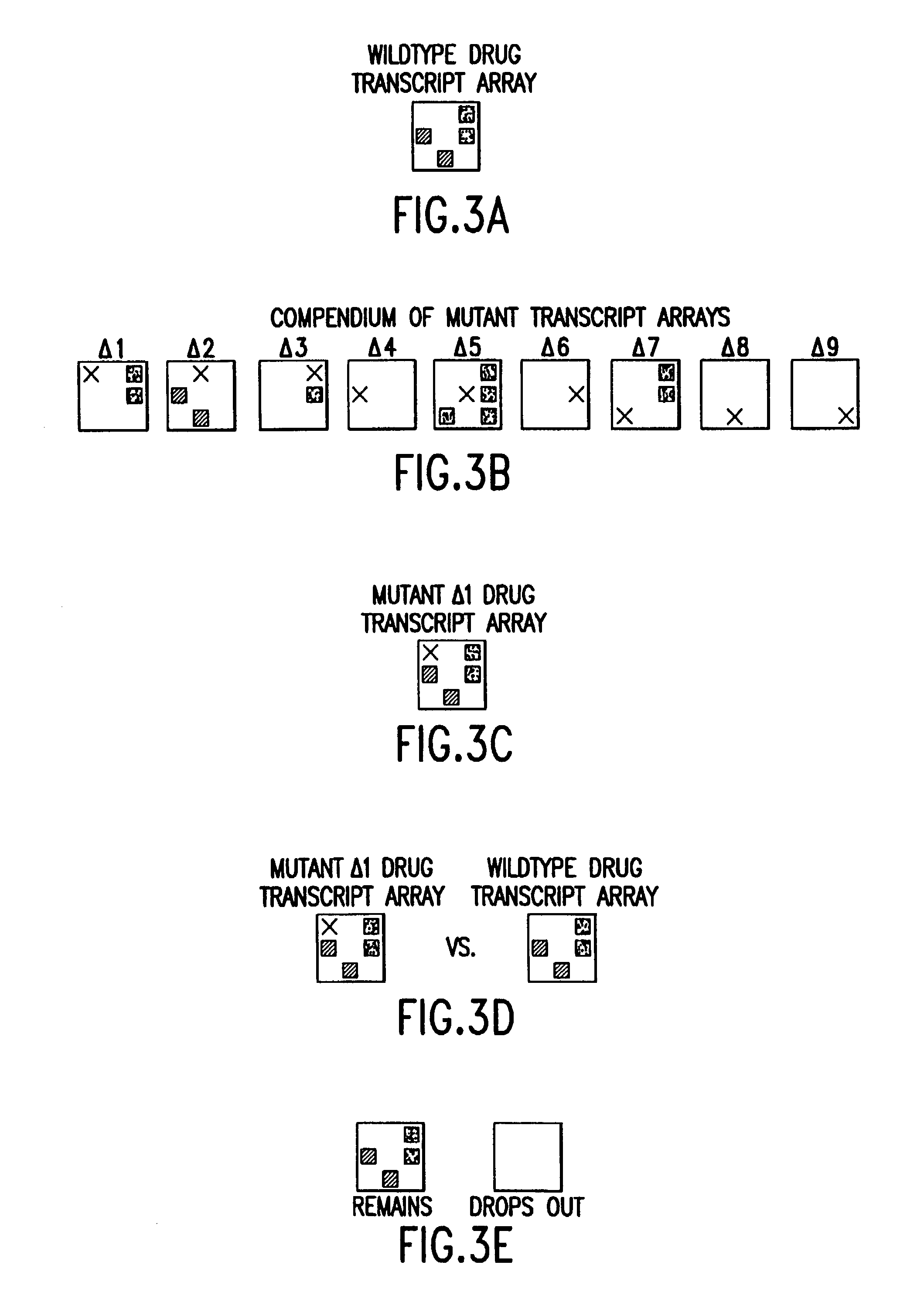Methods for drug target screening
a drug target and screening method technology, applied in the field of drug target screening, can solve the problems of the inability to characterize the action of the drug in the cell, and the inability to determine the screening method
- Summary
- Abstract
- Description
- Claims
- Application Information
AI Technical Summary
Benefits of technology
Problems solved by technology
Method used
Image
Examples
examples of alternative embodiments
[0101]The steps of comparing and analyzing observed perturbation patterns have alternatives illustrated in the following examples. A first example is illustrated in FIGS. 1A–1C. In FIG. 1A, a four-element gene network is illustrated, showing the relationship between genes A, B, C, and D. A gene network is used herein to represent the functional links indicating how one gene affects the expression of another gene. In this network, gene A activates gene B, genes B and D each activate gene C, and genes B and D inhibit each other. If a cell is exposed to a drug that completely inhibits transcription from gene B, the resulting wild-type drug perturbation pattern will be similar to that shown in FIG. 1B. However, exactly the same perturbation pattern could result if the cell is exposed to a drug that activates transcription from gene D. As a consequence, if exposure of an uncharacterized drug results in the perturbation pattern shown in FIG. 1B, it would not be possible to determine wheth...
PUM
| Property | Measurement | Unit |
|---|---|---|
| temperature | aaaaa | aaaaa |
| temperature | aaaaa | aaaaa |
| temperature | aaaaa | aaaaa |
Abstract
Description
Claims
Application Information
 Login to View More
Login to View More - R&D
- Intellectual Property
- Life Sciences
- Materials
- Tech Scout
- Unparalleled Data Quality
- Higher Quality Content
- 60% Fewer Hallucinations
Browse by: Latest US Patents, China's latest patents, Technical Efficacy Thesaurus, Application Domain, Technology Topic, Popular Technical Reports.
© 2025 PatSnap. All rights reserved.Legal|Privacy policy|Modern Slavery Act Transparency Statement|Sitemap|About US| Contact US: help@patsnap.com



